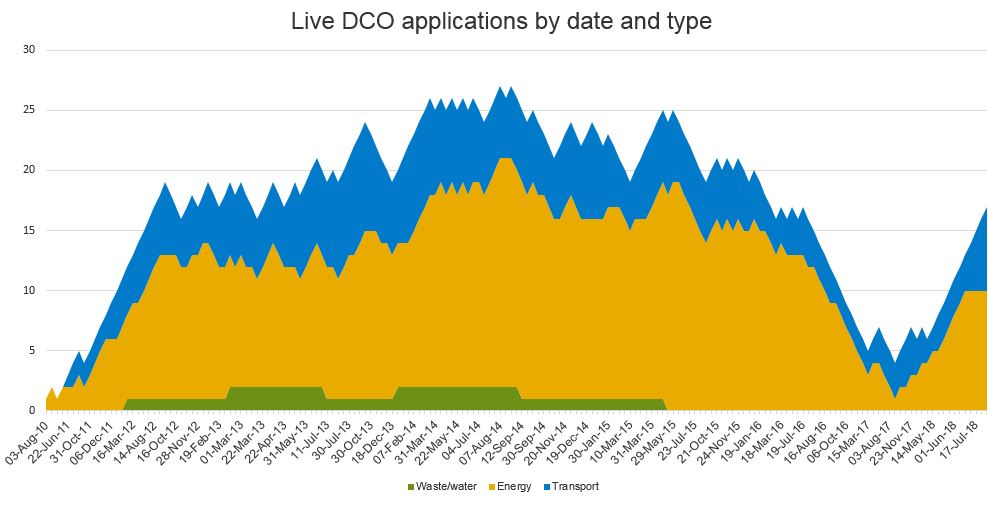805: Flurry of DCO applications ends drought

Angus Walker Partner
Today’s entry reports on the recent increase in applications for Development Consent Orders.
A year ago, there were only four ‘live’ applications for Development Consent Orders (DCOs) – ie ones that were at any stage between an application being submitted and a decision being made.
Commentators, me included, wondered if this was a permanent slow-down in nationally significant infrastructure projects and what the reasons might be. Others said it was a temporary blip and to keep the faith.
The faith-keepers were right (so far). The number of live applications has risen to 17, back up to the heady heights of July 2016. Planning Inspectorate officials have had to come off secondment, stop playing HQ Trivia and Fortnite, and process applications at a greater speed than ever before (that was just for laughs, I know they are carrying out a huge amount of pre-application work). See the graph below for a complete picture of live applications over time since the regime came into being. Rather neatly the first application was made on 3 August 2010 and the most recent one on 3 August 2018.
In terms of stages, two are at acceptance, nine are at ‘pre-examination’ (the period between acceptance and the preliminary meeting), four are at examination stage and two are at decision stage. The applications for the first five at pre-examination stage were made between 14 May and 1 June, the most ever made in such a short time.
In terms of types, 10 are energy and seven are transport. The ten energy are all electricity generation (six fossil fuels, three windfarms, one nuclear) whereas the seven transport are three highways, two rail freight interchanges, one port and one airport – only railways aren’t represented. Can we draw any conclusions from that? Probably not.
This increase in applications looks set to continue – the National Highways bow wave has yet to hit, with only two of the 17 live applications being theirs, one at either end of the process.
There are 64 projects on the PINS website recorded as being at the ‘pre-application’ stage. These are ones where the prospective developer has advised PINS that they are working on an application, or have taken a formal step such as seeking a scoping opinion.
Some of these are more or less dormant, though, with no activity being recorded for a long time. The oldest is, appropriately, Oldbury nuclear power station, with nothing new on the website since July 2010. Discounting the 18 that have no activity recorded in the last year leaves 46, and 19 of those are National Highways projects, 41% of them.
So it looks like civil servants, lawyers, planners, engineers, land referencers and a whole host of other professionals are going to be kept busy for a good while, and at least some of the infrastructure that the UK urgently needs is on its way.











